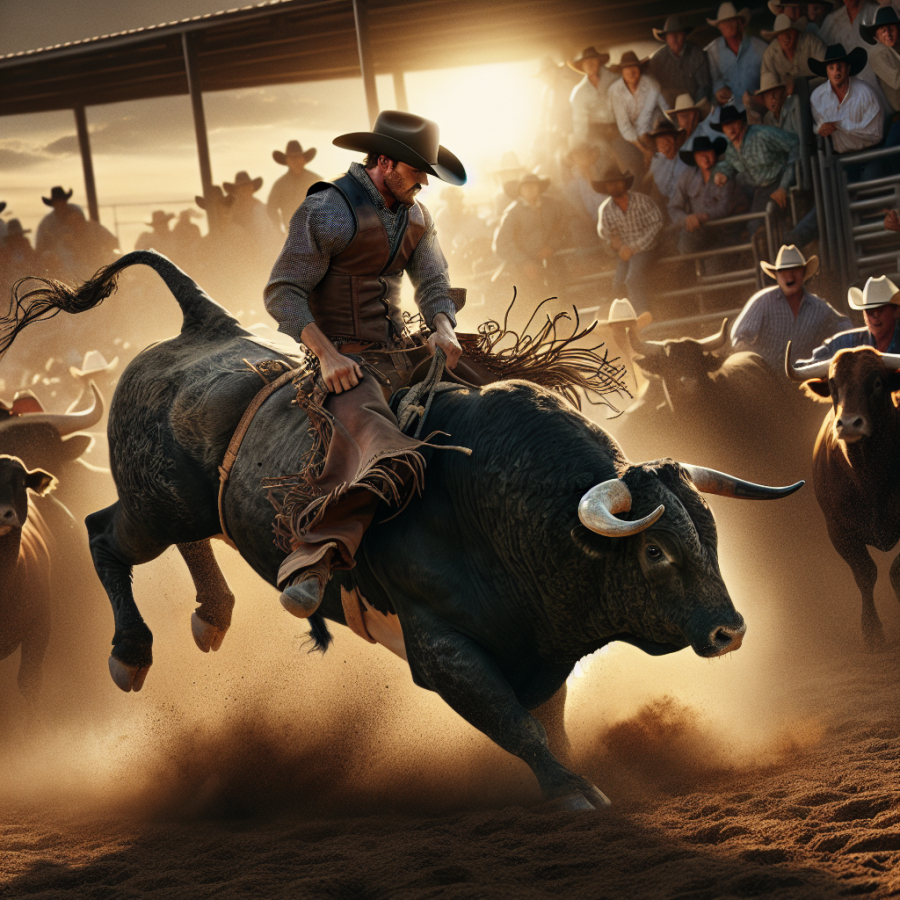The Harsh Realities: Exploring the Risks Involved in Bull Riding
Bull riding has long been a thrilling spectacle for fans and a display of valor for participants. However, it's essential to acknowledge that the exhilaration does not negate the undeniable risks associated with the sport.
Bull riding is arguably the most dangerous activity among professional rodeo sports. The U.S. Bureau of Labor Statistics classifies riding bulls as the most hazardous profession, given its high injury and fatality rates.
One of the primary risks that bull riders face is physical injuries. These range from minor wounds, fractures, and contusions to significant damages like spinal cord injuries, traumatic brain injuries, and even loss of life. The bulls used in these rodeos can weigh upwards of 2000 pounds, and when you add in the unpredictable nature of these animals, the risk intensifies.
Another daunting risk is the constant threat of concussions. Repeated brain trauma can lead to chronic traumatic encephalopathy (CTE), similar to the issues faced by contact sport athletes like boxers or football players. Bull riders frequently suffer concussions - the velocity at which the bulls buck throws the rider off, often causing the rider's head to whip back or, worse, get smashed by the bull.
However, it's not just the physical risks that are a concern. The emotional toll is enormous, often leading to extreme stress and anxiety disorders. The constant fear of severe injury or the potential for career-ending accidents weighs heavily on the bull rider's mental health. There is also a possibility of developing post-traumatic stress disorder (PTSD) from experiencing or witnessing horrific accidents.
Furthermore, the financial risks upper in bull riding. Unlike other professional sports, most bull riders do not have guaranteed contracts. Many bull riders are independent contractors who get paid by performance – meaning if they can't ride, they don't earn.
Insurance is another major issue. The high risk involved in the sport makes getting adequate coverage challenging and expensive. Many riders find themselves facing financial hardship from medical bills following an injury, especially if it keeps them from riding.
Overall, while bull riding is high-stakes, exciting, and financially rewarding for some, the potential impacts should not be downplayed or understated. A thorough understanding of the risks involved can help in making an informed decision for those considering the sport as a professional pursuit. It's always crucial to remember that the thrill comes with a cost, and in bull riding, that could be quite severe.
Read also:
Exploring the Quirks of French Cricket: A Unique Pastime
The Adrenaline Rush: Understanding the Excitement of Bull Riding
Bull riding is one of the most exhilarating sports that offers both excitement and danger. At its core, it reflects the courage of a rider attempting to control the infuriated beast with just a rope and sheer willpower. Understanding the adrenaline rush that this sport provides can shed light on why it is both intensely thrilling and continually intriguing.
Firstly, the element of uncertainty plays a crucial part in generating the adrenaline rush associated with bull riding. Every time a rider mounts a bull, there's no telling how the bull will react or how the ride will pan out. This unpredictability is what makes the sport extremely adventurous, as the rider is always on the edge, with their safety hanging in the balance.
The physical exertion that bull riding demands is another factor that contributes to the excitement. Bull riding requires riders to use almost every muscle in their body. From their hands, which hold onto the rope on the bull, to their legs that need to grip onto the bull and their core strength, which is needed for maintaining their balance. And when all these muscles come into play simultaneously, the body gets a radical adrenaline rush.
Furthermore, the mental challenge is another pivotal aspect that causes the adrenaline surge. Bull riding is not just about physical fitness and strength, it's also significantly about mental toughness. Each rider needs to master facing their fears, controlling their nerves, and maintaining focus despite the wild situation. Indeed, the mental fortitude needed to ride a bull intensifies the adrenaline rush even more.
Additionally, the competitive spirit of bull riding is an adrenaline booster. Each ride is timed, and riders are judged based on their performance. This stiff competition, coupled with the fear of getting thrown off the bull before the buzzer, adds to the surge of adrenaline. Every bull ride is a dance on the knife-edge between triumph and defeat; a dance where the slightest misstep could result in a painful fall.
Lastly, the crowd's energy also plays a significant role. Besides the intense concentration required to stay atop the bull, riders also have to handle the roaring crowd, the beaming lights, and the pulsating music. This electrifying atmosphere not only fuels the excitement of the rider but also boosts the adrenaline rush they experience.
In conclusion, bull riding is not a sport for the faint-hearted.




